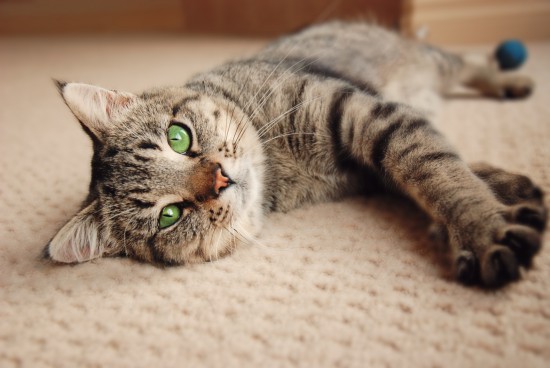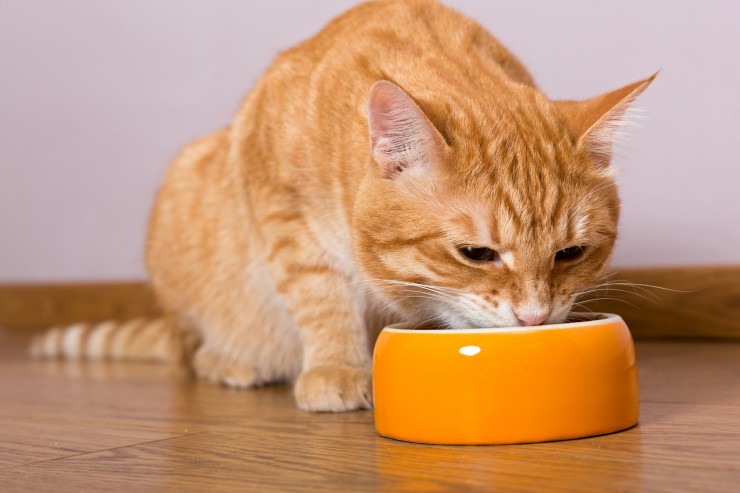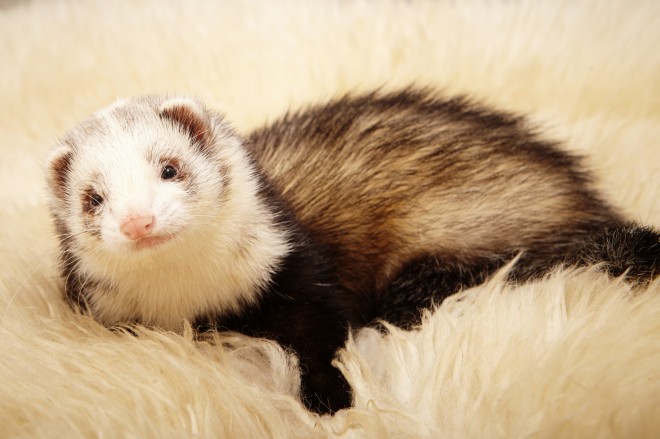The protein in cat dander affects millions. Breathing high levels of it consistently can trigger allergy and asthma symptoms, and cause respiratory problems to develop in those who were otherwise healthy.
Dander is dead flakes of skin that are constantly being shed to make way for newer healthier skin that is more able to protect from disease and infection.
This shedding process will continue throughout your pet's life and so learning to deal with it effectively with allow you to live a healthier lifestyle while being able to enjoy your cat more.
The main source of irritation is a protein in the dander called Fel d1 (Felis Domesticus 1). It is also found in saliva and urine. Symptoms from exposure include itchiness, watering eyes, closed throat, congestion, and frequent sneezing.
And while there is no way to eliminate it completely as long as you have your pet, here are 5 things you can do to keep it to a minimum.
Create A Cat-Free Zone---If you are just adopting a kitten you can set the ground rules from day one. Make the bedroom one of the places where your pet is not allowed to go. Keep the door closed so that the floors, bed, and chairs are less likely to have hair and dander.
If you already have a pet that is use to lounging in your bedroom, this may be a little bit tougher to enforce. Close the door to your room and thoroughly clean walls, carpets, and linens.
Your kitty may express great displeasure at being displaced. Scratching at the door and meowing may continue for a while. But stay strong. This one step could be the difference between being able to manage your allergies/asthma and enjoying your pet or having to find another home for it.
Reduce Fabrics---Anything that is woven is a haven for particulates. That includes the cat-related ones like hair and dander, but also other more normal particles such as dust, dust mites, mold and mildew spores, and seasonal pollen. All of these are well known allergens that can wreak havoc with those who are sensitive to them.
It would be nice to think that you could just wave a wand and totally redo your interior. And that's great if you can, but for many it will take an awareness of what needs to go and replacing things as the need occurs.
Replace draperies with blinds that can be wiped clean; wood floors, linoleum, and tile trump carpet because they can easily be damp mopped. Area rugs that can be washed make them easy and low cost to clean frequently.
Clean Your Home---Vacuuming frequently will help remove particles that have fallen to the floor that are likely to have dander attached to them. A cleaner with a HEPA (high efficiency particle arresting) filter will keep those particles from being blown back into the air.
Don't forget to wipe down the legs of chairs and tables that cats tend to like to rub against. Wash their favorite toys, rugs, and bedding at least once a week as well.
Bathe Your Cat---If this is done with a kitten from the time you bring it home, it will get use to the routine and it will make life easier for both of you. Starting a new regimen like this with an older cat is likely to be tougher. Regardless of age, check with your veterinarian first to determine the right frequency and the best products to use.
Filter The Air---Using a cleaner with a variety of particle filters including a HEPA will continually minimize the amount of airborne dander that is available to be inhaled.
------
Clear your air of cat燿ander and other irritants starting now.?Put the Cat Dander Air Purifier to work for you.?See it at http://purerair.com/cat_dander_air_purifier.html

 Some Frequently Asked Questions About The Utonagan Dog Breed
Some Frequently Asked Questions About The Utonagan Dog Breed
 Why Cats Love To Scratch So Much
Why Cats Love To Scratch So Much
 How To Avoid Skin Problems In The Mexican Hairless Dog
How To Avoid Skin Problems In The Mexican Hairless Dog
 How Dog Ownership Can Change Your Human Friendships
How Dog Ownership Can Change Your Human Friendships
 How To Manage A Dog That Won’t Tolerate Being Picked Up
How To Manage A Dog That Won’t Tolerate Being Picked Up
 Why It Is Important Not To Over-exercise Puppies
Why It Is Important Not To Over-exercise Puppies
 Canine Diet & Epilepsy
Canine Diet & Epi
Canine Diet & Epilepsy
Canine Diet & Epi
 Use Equine Ulcer Supplements To Save Your Horse From Colic Pain
Use Equine Ulcer Supplements To Save Your Horse From Colic
Use Equine Ulcer Supplements To Save Your Horse From Colic Pain
Use Equine Ulcer Supplements To Save Your Horse From Colic
 The Benefits Of Feeding The Right Diet To Cats According To Their Ages
The Benefits Of F
The Benefits Of Feeding The Right Diet To Cats According To Their Ages
The Benefits Of F
 Checking Your Ferret Over And Identifying Good Health
Checking Your Fer
Checking Your Ferret Over And Identifying Good Health
Checking Your Fer
 Worming Cats - When, How And Why
Worming Cats - Wh
Worming Cats - When, How And Why
Worming Cats - Wh